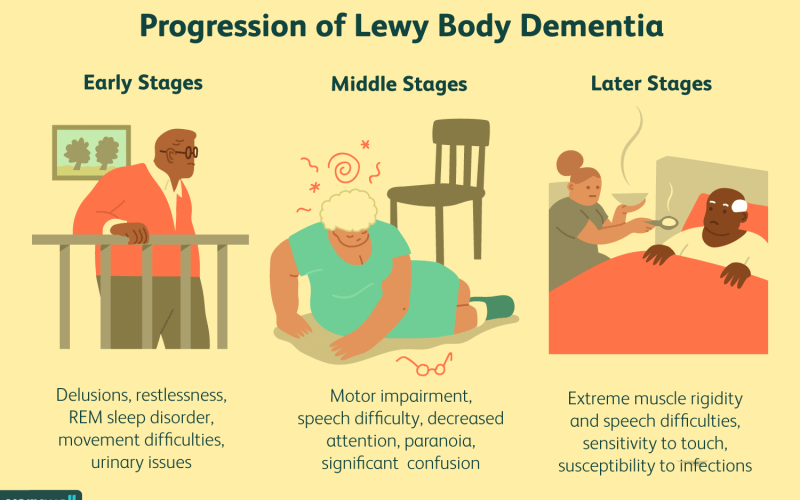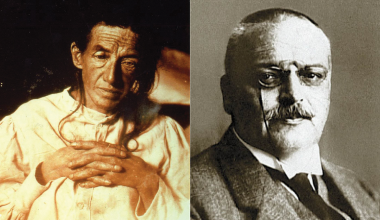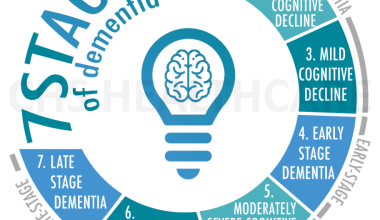As an Amazon Associate, I earn from qualifying purchases
The timeline of Vascular Dementia stages can vary from person to person, but generally progresses from mild to moderate to severe over time. Vascular Dementia is a type of dementia that occurs when there is damage to the blood vessels in the brain, leading to difficulties in thinking, memory, and reasoning.
While the exact timeline of Vascular Dementia stages can differ for each individual, there are general patterns that can be identified. In the early stages, individuals may experience mild cognitive decline, such as forgetfulness and difficulty concentrating. As the disease progresses, more significant cognitive impairment becomes evident, including problems with language, judgment, and decision-making.
In the later stages, individuals may require assistance with daily activities and experience severe memory loss. Understanding the stages of Vascular Dementia can help individuals and their families navigate the challenges of the disease and plan appropriate care.
What Is Vascular Dementia?
What is Vascular Dementia?
Vascular dementia is a type of dementia caused by reduced blood flow to the brain, resulting in a decline in cognitive abilities. It is the second most common form of dementia, following Alzheimer’s disease.
Definition And Causes
Vascular dementia occurs when the brain’s blood supply is blocked or damaged, leading to cognitive impairment. This damage is often the result of a stroke or other conditions that affect blood vessel function.
Risk Factors
Several risk factors can increase the likelihood of developing vascular dementia. These include hypertension, diabetes, smoking, high cholesterol, and a history of heart disease or stroke. Individuals with these risk factors should take steps to manage their overall health to reduce the risk of developing vascular dementia.
:max_bytes(150000):strip_icc()/vascular-dementia-98802_color2b-5c454d0546e0fb0001c068da.png)
Credit: www.verywellhealth.com
Diagnosing Vascular Dementia
In order to effectively manage and treat vascular dementia, it is crucial to have a proper diagnosis. Diagnosing this condition involves a combination of careful observation and medical tests. By recognizing the symptoms and undergoing the necessary examinations, doctors can accurately determine the presence and stage of vascular dementia.
Symptoms To Watch For
The first step in diagnosing vascular dementia is identifying the symptoms that may indicate its presence. While these symptoms can sometimes be subtle or mistaken for normal aging, it is important to be vigilant and consult with a medical professional if you or a loved one experience any of the following:
- Sudden changes in memory or cognitive function
- Confusion or disorientation, particularly in familiar settings
- Difficulties with problem-solving or decision-making
- Trouble with language and communication
- Difficulty with coordination or motor skills
- Personality and mood changes, such as increased irritability or apathy
- Depression or anxiety
If you notice any of these symptoms, it is important to schedule an appointment with a healthcare professional for further evaluation.
Medical Tests And Procedures
Once you consult with a doctor regarding your symptoms, they will likely perform a series of medical tests and procedures to confirm a diagnosis of vascular dementia. These tests aim to assess brain function, identify potential underlying causes, and rule out other conditions that may mimic the symptoms of vascular dementia.
The specific tests and procedures used may include:
- Mental status tests: These evaluations assess memory, attention, language, and problem-solving skills to gauge cognitive function.
- Neuropsychological testing: Comprehensive assessments that evaluate memory, thinking abilities, and behavior.
- Brain imaging: Techniques such as magnetic resonance imaging (MRI) or computed tomography (CT) scans may be used to detect brain abnormalities, including areas affected by stroke or reduced blood supply.
- Blood tests: These tests help identify risk factors and potential underlying causes of vascular dementia, such as high cholesterol, diabetes, or vitamin deficiencies.
- Carotid ultrasound: This non-invasive test assesses the blood flow in the carotid arteries, which supply blood to the brain.
- Electroencephalogram (EEG): Measures the electrical activity in the brain to identify abnormal patterns.
These tests, along with a careful review of medical history and physical examination, contribute to a comprehensive diagnosis of vascular dementia. It is important to follow all recommended procedures to ensure an accurate assessment and appropriate treatment plan.
The Stages Of Vascular Dementia
Vascular dementia is a type of dementia that occurs due to reduced blood flow to the brain, resulting in cognitive decline. The progression of vascular dementia is characterized by different stages that mark changes in the individual’s abilities and overall functioning. Understanding the stages can help caregivers and loved ones provide appropriate support and plan for the future.
Early Stage
The early stage of vascular dementia is often marked by subtle signs that may be easily overlooked or attributed to normal aging. In this stage, individuals may experience:
- Mild memory lapses: Difficulty remembering recent events or conversations, but still able to recall older memories.
- Problems with concentration: Difficulty focusing on tasks, problem-solving, or planning activities.
- Changes in mood and personality: Increased irritability, mood swings, or apathy.
- Reduced organizational skills: Struggling to keep track of appointments, bills, or household tasks.
During the early stage, it is crucial to seek medical advice and get a diagnosis to ensure proper management and treatment. Making lifestyle changes, such as adopting a brain-healthy diet and engaging in regular exercise, can also help slow down the progression of the disease.
Middle Stage
As vascular dementia progresses to the middle stage, the symptoms become more pronounced and begin to interfere with daily life. Common characteristics of this stage include:
- Memory loss: More frequent forgetfulness, including names of familiar people and places.
- Difficulty with language: Problems finding the right words or following a conversation.
- Impaired judgment: Poor decision-making and a decreased ability to assess risks.
- Confusion and disorientation: Becoming disoriented in familiar surroundings or getting lost.
- Changes in behavior: Increased agitation, anxiety, or withdrawal from social activities.
During this stage, individuals with vascular dementia may require more assistance with daily tasks and personal care. Creating a safe and supportive environment, providing regular routines, and utilizing memory aids can help improve their quality of life.
Late Stage
In the late stage of vascular dementia, individuals become highly dependent on others for their care and experience severe cognitive decline. Common characteristics of this stage include:
- Severe memory loss: Forgetting the names of close family members and having difficulty recognizing familiar faces.
- Significant communication difficulties: Difficulty speaking or understanding speech.
- Mobility issues: Impaired balance and coordination, leading to difficulty walking or even becoming bedridden.
- Loss of bladder and bowel control: Incontinence becomes more common.
- Increased vulnerability to infections: Weakening immune system makes individuals more susceptible to infections.
During this stage, providing comfort, maintaining a familiar routine, and ensuring safety are paramount. Palliative care may be necessary to manage symptoms and provide emotional support both for individuals with vascular dementia and their loved ones.

Credit: www.dementiaaide.com
Managing Vascular Dementia
Vascular dementia is a condition that requires careful management to improve the individual’s quality of life. As the disease progresses through different stages, it becomes crucial to adapt treatment and lifestyle modifications accordingly. Understanding how to manage vascular dementia is essential for both patients and their caregivers.
Treatment Options
1. Medication: Certain medications can help manage the symptoms of vascular dementia, such as controlling high blood pressure and reducing the risk of blood clots.
2. Cognitive Therapy: Engaging in cognitive therapy can provide mental stimulation and improve cognitive function, helping to slow down the progression of the disease.
3. Rehabilitation Programs: These programs focus on physical and occupational therapy to enhance mobility and everyday functioning.
Lifestyle Modifications
1. Healthy Diet: Encouraging a diet rich in fruits, vegetables, and whole grains to support overall brain health and reduce the risk of further vascular damage.
2. Regular Exercise: Physical activity can help improve blood flow to the brain and reduce the risk of additional strokes.
3. Cognitive Activities: Engaging in mentally stimulating activities such as puzzles, reading, or social interactions can help maintain cognitive function.
Support And Caregiving
Support and caregiving are crucial aspects when it comes to managing and providing for individuals affected by vascular dementia. Building a strong support system and implementing effective caregiving strategies can significantly improve the quality of life for both the patient and the caregiver. In this section, we will discuss the importance of building a support system and offer valuable tips for caregivers to navigate the challenges associated with vascular dementia.
Building A Support System
When faced with the challenges of vascular dementia, it is essential to establish a reliable support system. This system can provide emotional, physical, and practical assistance to both the patient and the caregiver. Consider the following strategies to build a robust support network:
- Reach out to family and friends: Inform close family members and friends about the situation and seek their support. They can help with tasks such as accompanying the patient to medical appointments or providing respite care for the caregiver.
- Join support groups: Seek out support groups for caregivers of individuals with vascular dementia. These groups can offer invaluable guidance, support, and a platform to share experiences and emotions with others who understand your situation.
- Consult healthcare professionals: Healthcare professionals specializing in dementia care can provide essential information, resources, and guidance to help you better understand and manage the condition. Don’t hesitate to reach out to doctors, nurses, or social workers for assistance.
- Explore community resources: Look for local community resources such as adult day centers, memory care facilities, or respite programs. These resources can provide relief and support for both the patient and the caregiver.
Tips For Caregivers
Caring for someone with vascular dementia can be challenging, both physically and emotionally. Here are some practical tips to help caregivers navigate this complex journey:
- Stay informed: Educate yourself about vascular dementia to better understand the symptoms, progression, and available treatment options. This knowledge will enable you to provide the best care possible.
- Establish routines: Maintaining a structured daily routine can help individuals with vascular dementia feel more secure and reduce anxiety. Stick to familiar activities and prioritize regular sleep and mealtimes.
- Communicate effectively: As dementia progresses, communication may become increasingly challenging. Use simple, clear language, maintain eye contact, and provide visual cues to aid understanding. Speaking slowly and calmly can also enhance communication.
- Take care of yourself: Caregiving can be demanding, so it’s vital to prioritize self-care. Set aside time to engage in activities you enjoy, get enough rest, and seek support from others. Remember that caring for yourself allows you to provide better care for your loved one.
- Ask for help: Don’t hesitate to ask family members or friends for assistance. Delegating tasks can lighten the caregiver’s workload and prevent burnout. Accepting help is not a sign of weakness but a way to ensure the well-being of both the patient and the caregiver.

Credit: www.pinterest.com
Frequently Asked Questions On Vascular Dementia Stages Timeline
How Fast Does Vascular Dementia Progress?
Vascular dementia progresses at varying rates, making it difficult to determine an exact speed. Factors like age, overall health, and the extent of damage to blood vessels in the brain affect the progression. Early symptoms may appear suddenly or gradually worsen over time.
Regular medical check-ups can help monitor the progression.
What Is The Life Expectancy Of Someone With Advanced Vascular Dementia?
The life expectancy of someone with advanced vascular dementia varies, but it typically ranges from 3 to 10 years. Several factors can influence this, including the individual’s overall health and the severity of the dementia. It’s essential to consult a healthcare professional for personalized information and support.
How Can You Tell What Stage Of Dementia A Person Is In?
To determine the stage of dementia in a person, healthcare professionals consider factors like memory loss, cognitive abilities, behavior changes, and functional abilities. Assessments, interviews, and tests help in evaluating the individual’s condition and establishing their stage of dementia.
How Bad Is Vascular Dementia?
Vascular dementia can have varying levels of severity, depending on individual circumstances. It is a progressive condition that affects memory, thinking, and behavior due to reduced blood flow to the brain. Early intervention and managing cardiovascular risk factors can help slow the progression and improve quality of life.
Conclusion
In closing, understanding the stages of vascular dementia is crucial in providing the best care for those affected. With early recognition and interventions, the progression of the disease can be slowed, improving the quality of life for individuals and their families.
Stay informed and proactive in managing the challenges of vascular dementia.
As an Amazon Associate, I earn from qualifying purchases






